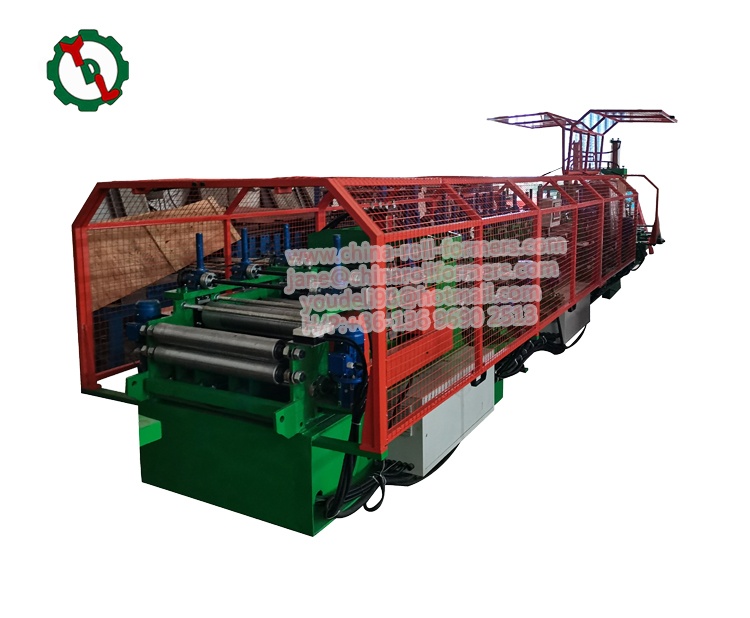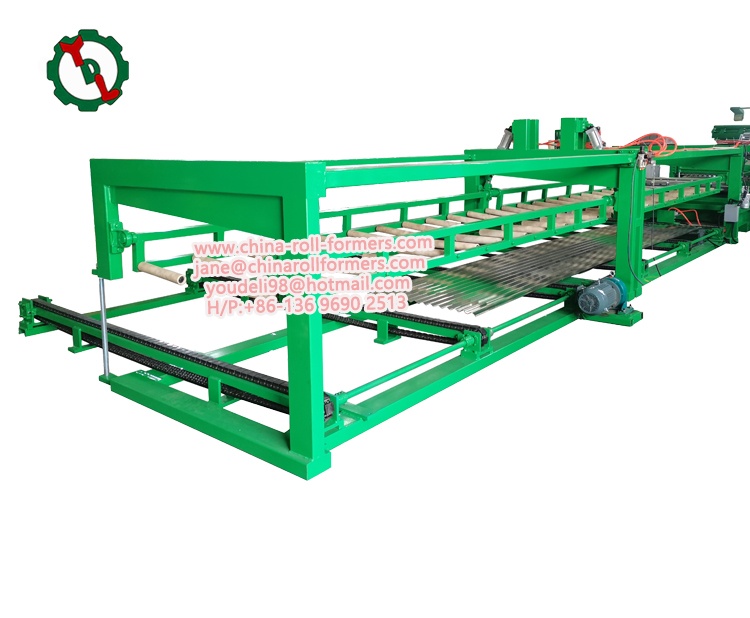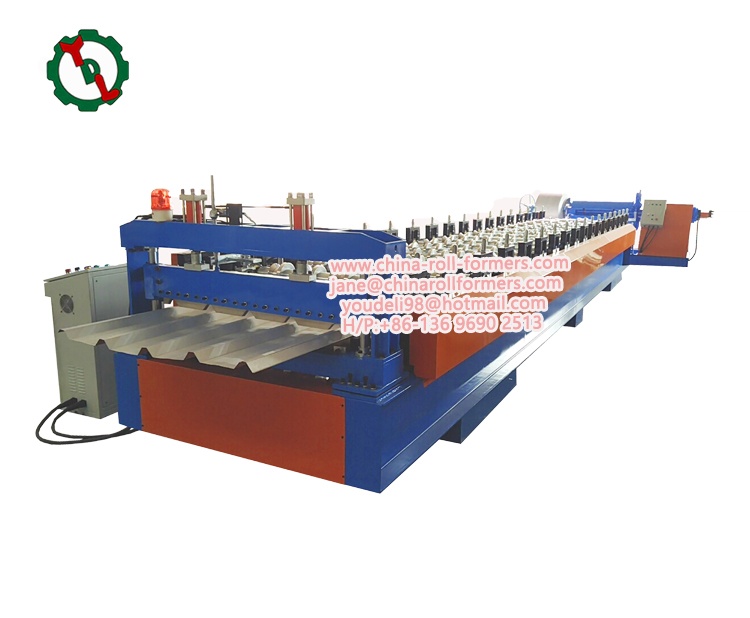Purlins are essential structural elements in the construction of buildings, especially in the roofing and framing of steel buildings. They provide support to the roof deck and carry the weight of roofing materials, ensuring stability and durability. The process of manufacturing purlins has been significantly improved with the introduction of the machine à former les pannes, a vital tool in modern construction. In this article, we will explore the key features of the purlin forming machine and how it plays a crucial role in the production of purlins.
What is a Purlin Forming Machine?
A purlin forming machine is a type of roll-forming machine designed to produce purlins from steel coils. These machines operate by feeding steel strips through a series of rollers that progressively shape the metal into the desired profile. They are capable of producing a wide range of purlin profiles, including C-purlins, Z-purlins, and U-purlins, depending on the requirements of the construction project.
These machines are designed for high precision, speed, and efficiency, ensuring that the final purlins meet the necessary structural standards for building construction. In addition to their versatility, purlin forming machines are highly automated, allowing manufacturers to produce large quantities of purlins with minimal labor.
1. Précision et exactitude
One of the key features of a purlin forming machine is its precision and accuracy. The machine uses a series of rollers that are meticulously calibrated to ensure that the steel is shaped into the exact profile required. This is critical in construction, as purlins must conform to specific dimensions to maintain the structural integrity of the building.
The roll-forming process allows for tight tolerances, ensuring that each purlin produced is consistent in terms of size, shape, and thickness. This precision reduces the likelihood of defects, ensuring that each purlin performs as intended in the construction process.
2. Vitesse de production élevée
Another major advantage of the purlin forming machine is its ability to produce purlins at high speeds. The continuous nature of the roll-forming process means that the machine can produce large quantities of purlins in a short amount of time. This high production speed is particularly important for large-scale construction projects that require thousands of purlins to be produced and delivered quickly.
By significantly increasing production speed, they help manufacturers meet tight deadlines and stay competitive in the market. Whether for commercial, industrial, or residential buildings, fast production times ensure that projects can be completed on schedule.
3. Versatility in Purlin Profiles
They are highly versatile, capable of producing a wide range of purlin profiles. The most common profiles include C-purlins, Z-purlins, and U-purlins, but many machines are capable of producing custom profiles to meet specific project requirements. This flexibility allows manufacturers to cater to different types of construction projects, including those with unique or specialized needs.
In addition to varying shapes, purlin forming machines can handle different sizes of steel coils, enabling the production of purlins of varying thicknesses and lengths. This versatility makes the machine a valuable asset for manufacturers who need to produce a variety of purlin types for diverse applications.

4. Fonctionnement automatisé
Modern purlin forming machines are designed for automation, which minimizes the need for manual intervention. These machines come equipped with advanced control systems, which allow operators to easily adjust settings such as speed, profile size, and thickness. Many machines are also equipped with automatic cutting systems, which ensure that each purlin is cut to the correct length without the need for manual measuring.
Automation not only improves the efficiency of the production process but also reduces human error. This ensures that each purlin produced meets the required quality standards and reduces the risk of costly mistakes during manufacturing.
5. Material Savings
Another benefit of using a purlin forming machine is the material savings it offers. The precise shaping of steel coils ensures that the metal is used efficiently, with minimal waste. This is especially important for projects where cost control is essential, as reducing material waste can lead to significant savings over time.
Furthermore, the continuous roll-forming process allows for the use of thinner, lighter materials without compromising strength. This makes purlins produced with these machines cost-effective, as they can provide the necessary structural support at a lower material cost.
6. Personnalisation et flexibilité
They can be customized to suit specific production requirements. Manufacturers can adjust parameters such as the thickness, length, and profile of the purlins produced to meet the needs of different construction projects. Some machines are also capable of producing special shapes and sizes, allowing for greater flexibility in production.
Customization is particularly beneficial for manufacturers who work with clients that have specific design requirements. The ability to produce purlins with unique specifications ensures that manufacturers can meet a wide range of demands without the need for additional equipment or time-consuming processes.
7. Durability and Long Service Life
They are built to last, with robust construction and high-quality components that ensure long-term reliability. These machines are designed to handle continuous production runs, making them ideal for high-volume manufacturing environments. The durable nature of purlin forming machines means that they require less frequent maintenance and can operate efficiently for many years with proper care.
The durability of these machines not only contributes to a lower total cost of ownership but also ensures consistent production quality over the long term, providing manufacturers with a stable, reliable solution for purlin production.
8. Integration with Other Manufacturing Systems
In modern manufacturing environments, efficiency and integration are key factors in staying competitive. They are often designed to integrate seamlessly with other manufacturing systems, such as coil feeding systems, cutting systems, and automated packaging lines. This integration allows for a streamlined production process, reducing the need for manual handling and improving overall efficiency.
By integrating purlin forming machines with other systems, manufacturers can further optimize their operations and reduce production costs. The automation of the entire production process leads to increased output, reduced labor costs, and improved quality control.
9. Easy Operation and Maintenance
Despite their advanced features, they are generally easy to operate and maintain. With user-friendly control panels and intuitive interfaces, operators can quickly adjust settings and monitor the machine’s performance. Additionally, many machines are designed with ease of maintenance in mind, with components that are easy to access for routine inspections and repairs.
The straightforward operation and maintenance of purlin forming machines reduce the need for specialized training and help ensure that machines run smoothly with minimal downtime.
Conclusion
The purlin forming machine is a vital tool in modern construction, offering a range of benefits including high precision, fast production speeds, versatility in purlin profiles, and automation. Its ability to produce large quantities of purlins quickly and efficiently makes it an essential piece of equipment for manufacturers in the steel and construction industries.
From customization and material savings to durability and ease of operation, the key features of they make it an indispensable asset for any production facility. As the demand for high-quality, cost-effective purlins continues to grow, investing in a purlin forming machine can help manufacturers stay competitive and meet the needs of an ever-evolving market.






